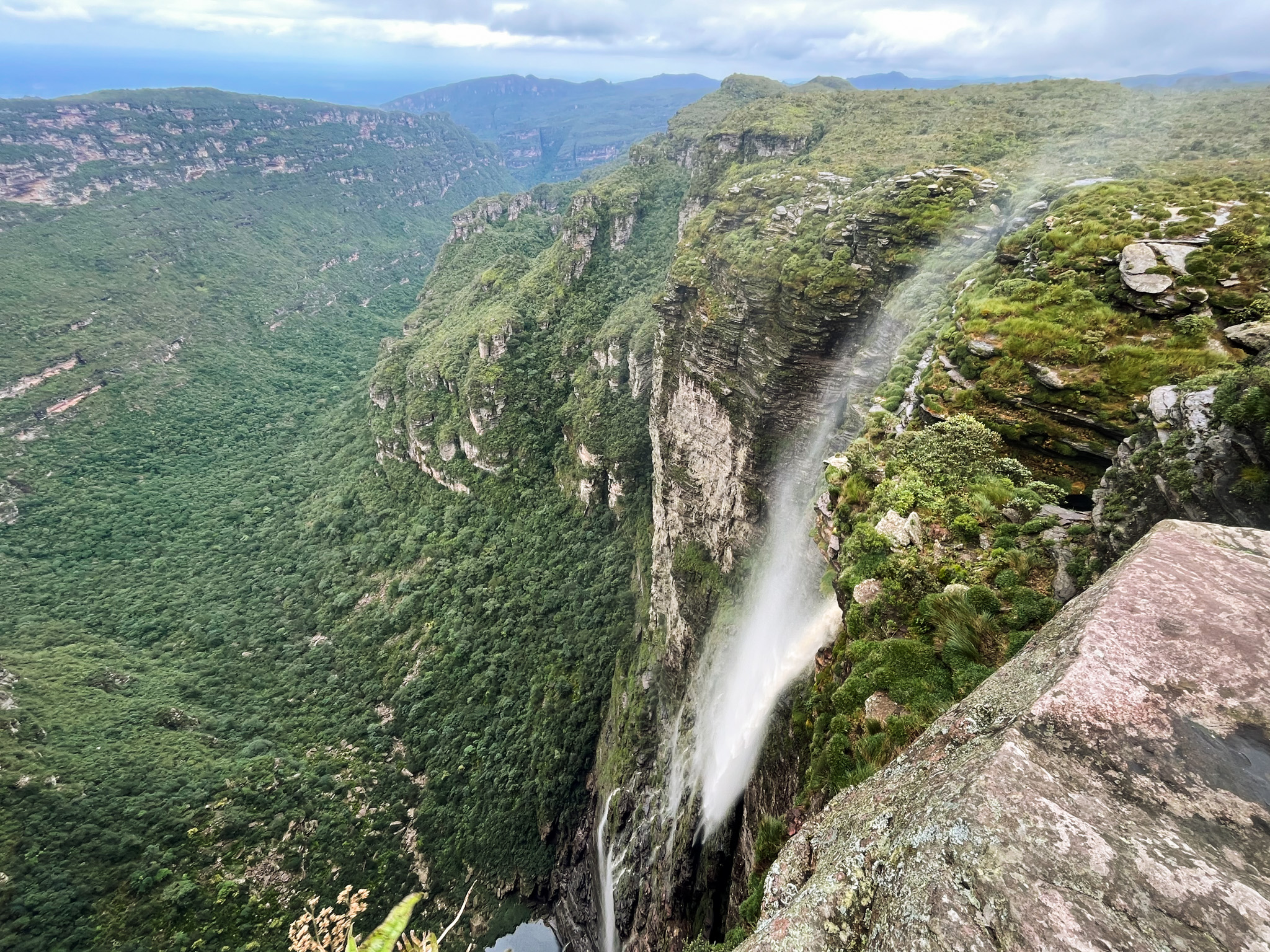

Vale do Capão is a quiet town in Chapada Diamantina National Park, Brazil. Surrounded by flat-topped mountains, lush plateaus, and dense jungle, this hidden gem offers a tranquil escape into nature.
Often overshadowed by Lençóis, Vale do Capão exudes a laid-back charm and is home to a vibrant hippie culture. It’s the perfect place to sample delicious local food before setting off on one of the many hikes starting right from town. Vale do Capão is the gateway to one of the best multi-day treks in Brazil, Vale do Pati. In addition, there are several short day hikes that will take you to unique and lesser-visited waterfalls.
In this guide to Vale do Capão, Brazil, I’ll share everything you need to know to plan your trip, based on my own experience visiting.
If you need a refresher, check out my guide to day hiking. For more places to explore in Brazil, browse my Brazil destination guides.
Related Articles:
Vale do Pati
Things to Do in Vale do Capão
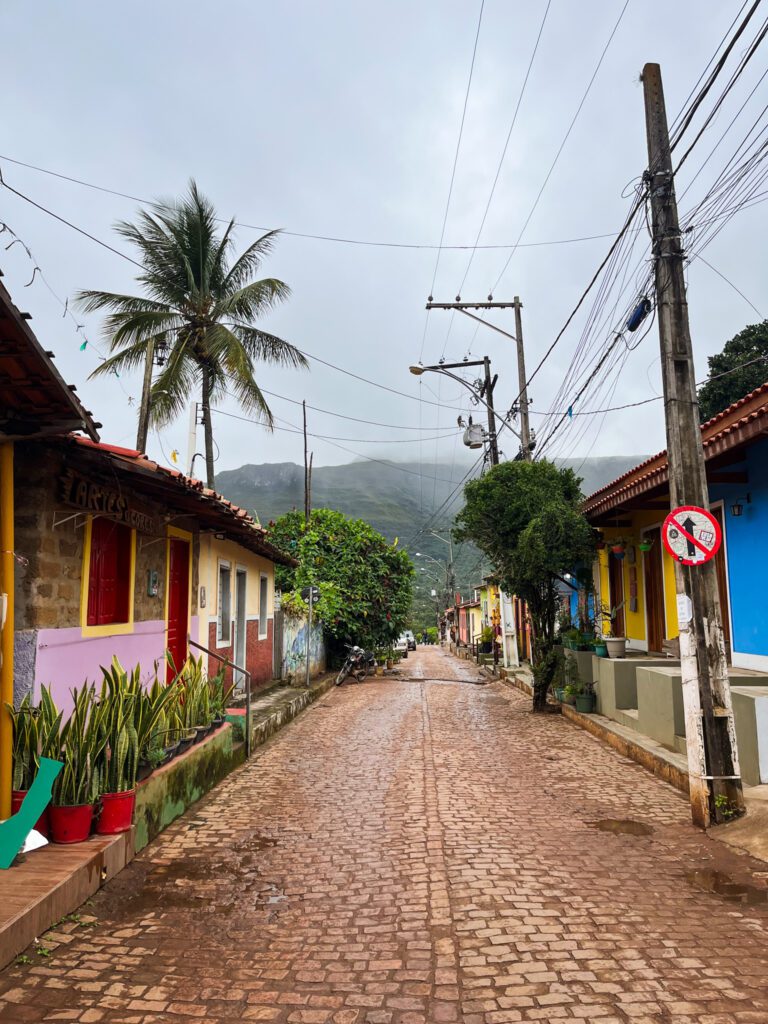

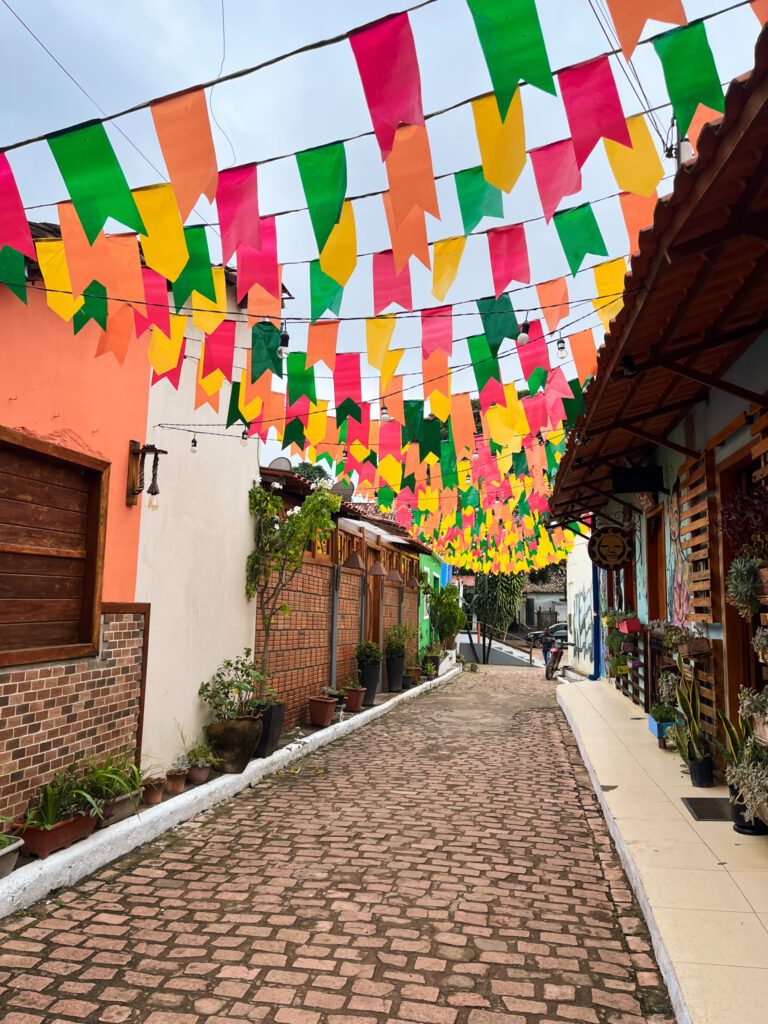

Vale do Pati
If you only do one thing in Chapada Diamantina, make it Vale do Pati, a stunning multi-day trek that you can hike independently (as I did) or with a guided tour. This trek starts from Vale do Capão and takes you through plains and jungles to see cascading waterfalls, clifftop viewpoints, and the iconic flat-topped mountains and plateaus that define the region.
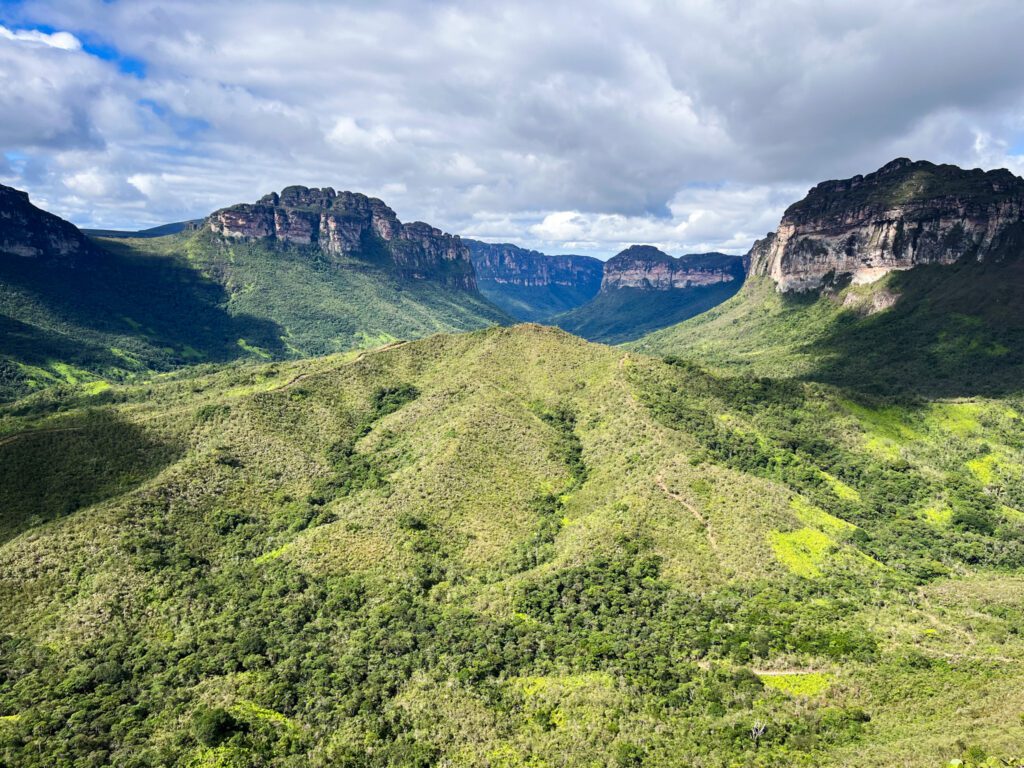

Hikes in Vale do Capão
Aside from Vale do Pati, there are several other small hikes starting from Vale do Capão worthy of a few days of exploration. I recommend using a GPS hiking app for these trails, as they are sometimes not well marked and difficult to navigate.
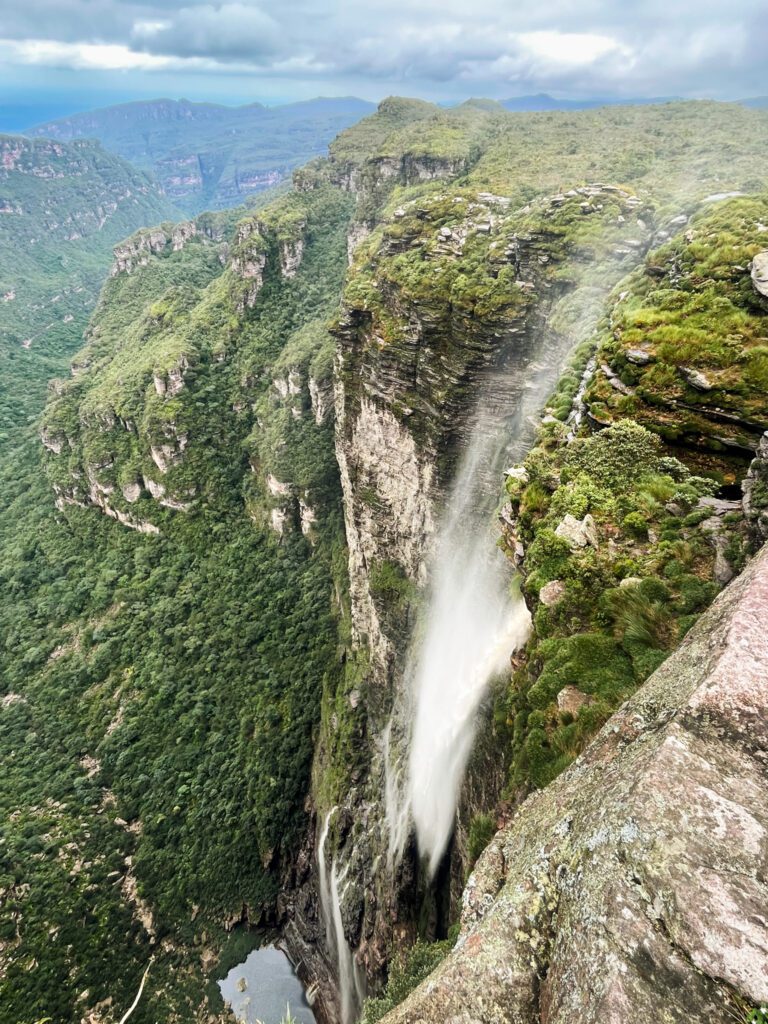

Cachoeira da Fumaça
The must-do day hike in Vale do Capão is Cachoeira da Fumaça, leading you to a cliff with a majestic waterfall plunging from a height of 1,115 feet (340 meters). Named “Waterfall of Smoke” due to unique wind patterns, the cascade is blown upwards, not reaching the cliff’s base. This trail also serves as the start of a multi-day trek to Lençóis that will give you the opportunity to visit the base of the waterfall as well. If you’re interested, it’s recommended to do this trek with a guide due to challenging trail conditions and safety concerns.
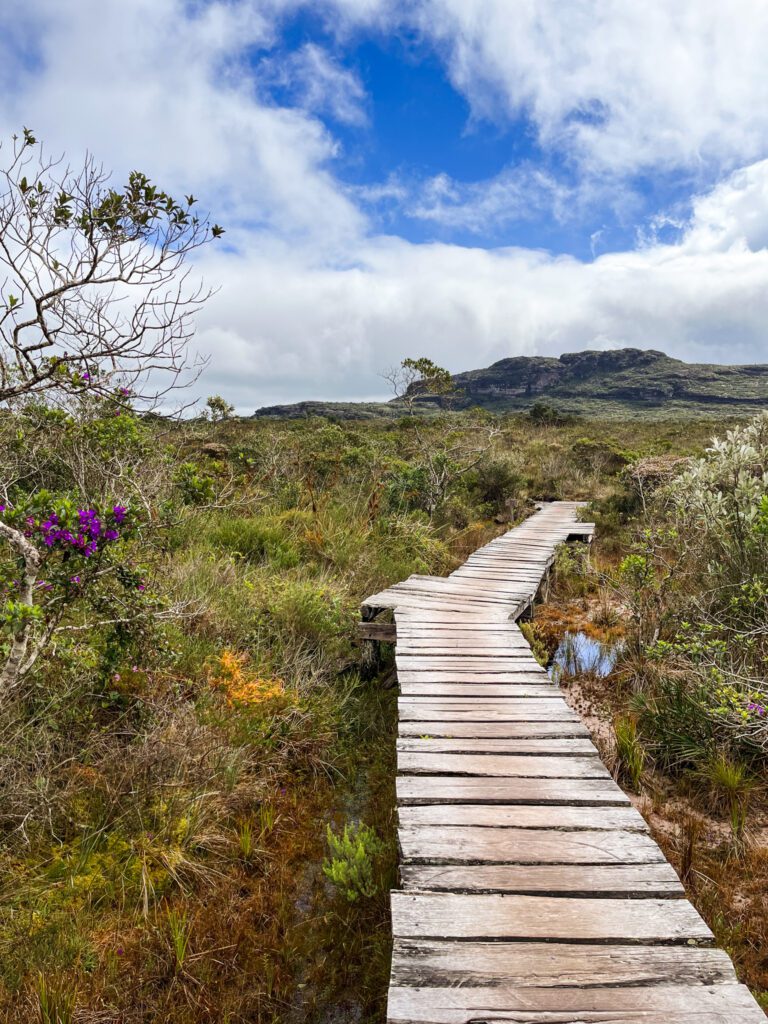

The Cachoeira da Fumaça hike begins at the visitor’s center, a 30-minute walk from town. Here, you’ll be asked to check in and can leave a voluntary donation. The trek to the waterfall viewpoint takes at least half a day, covering 7.3 miles (11.7 km) with 1,725 feet (526 m) elevation gain. The initial section consists of a steep climb, but you’ll have great views of the valley on the way up. After the climb, the trail is mostly flat and may be flooded after rain. At the cliff’s edge, you can turn left and cross the river to head to the northern viewpoint, or keep right for the southern viewpoint.
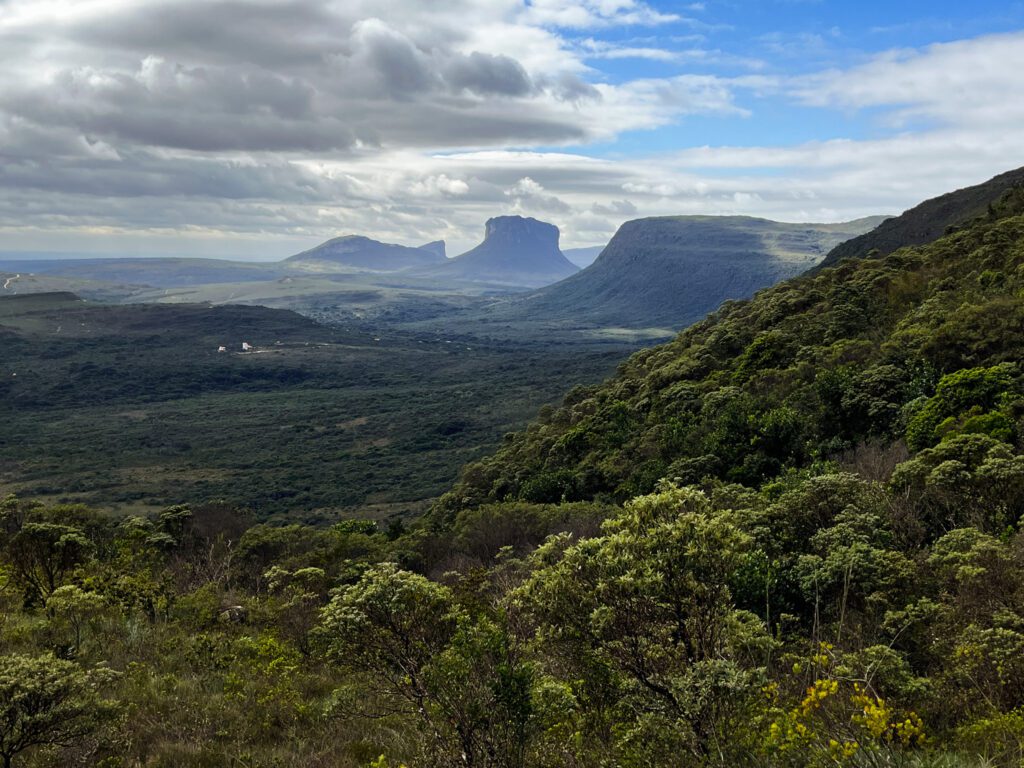

The northern viewpoint is most popular with tour groups and allows you to fully appreciate the upward flowing pattern of the waterfall. Be prepared to wait if you want your picture here; the tour groups often control access to the viewpoint and allow only one person at a time on the main ledge.
The southern viewpoint is worth a visit as well, but bring rain gear and be prepared to get wet! On the day I visited, intense mist from the waterfall was blown towards this viewpoint.
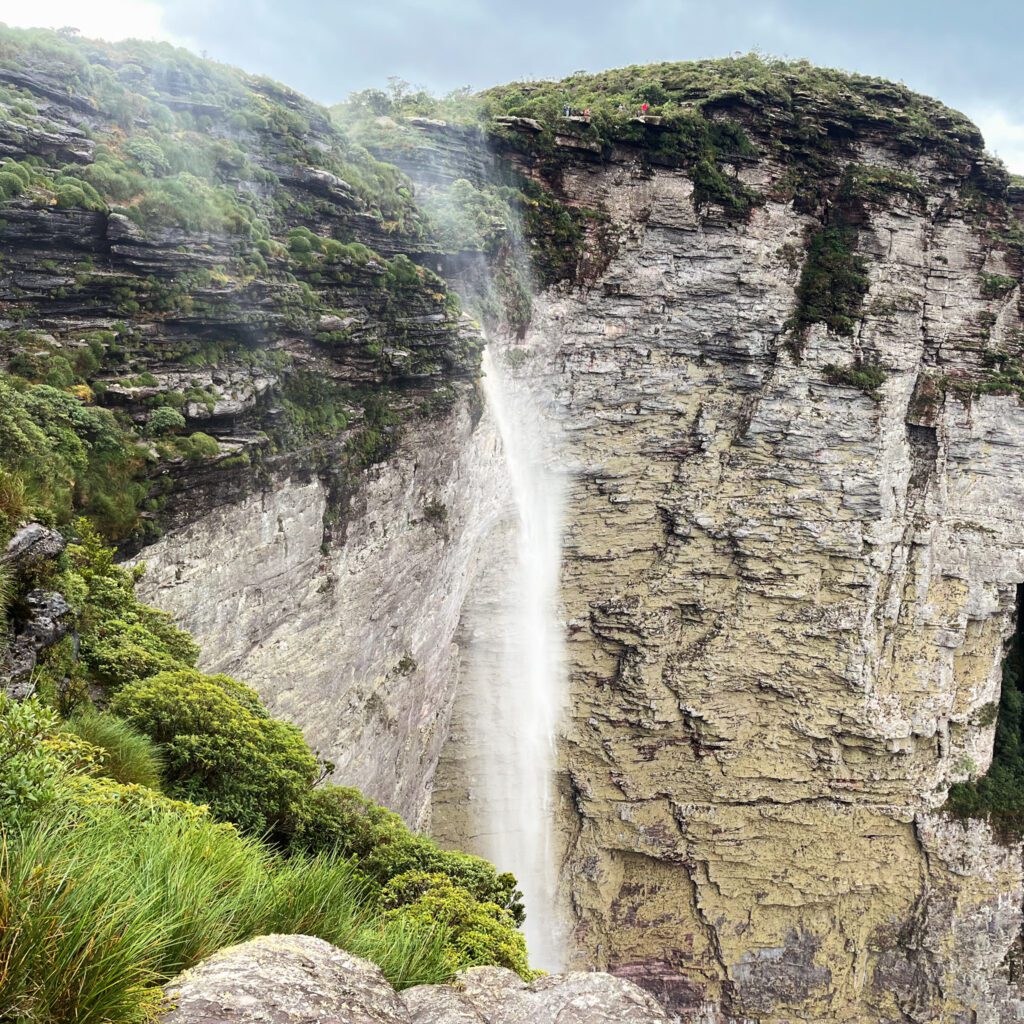

Poço do Gavião
The second hike in Vale do Capão that I recommend is Poço do Gavião, which starts at the edge of town and leads to a scenic swimming hole. This hike spans 5 miles (8 km) with 1,770 ft (540 m) elevation gain and should take a half-day to complete. The trail gives you great views of the region’s uniquely shaped mountains as you climb a hill above Vale do Capão. Upon reaching the top of the hill, you’ll descend down the other side towards the river. Poço do Gavião is a large pool in the river, perfect for cooling off on a hot day. When I visited, I didn’t see a single other person and had the place to myself!
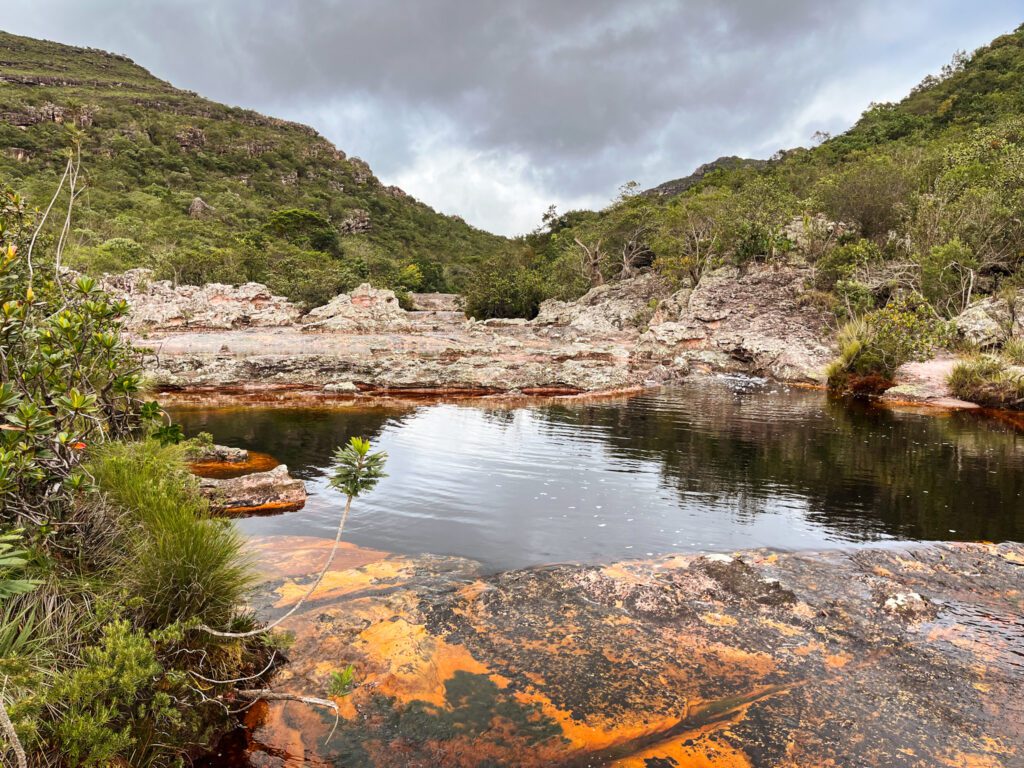

Rio Rodas and Rio Preto Waterfalls
In a few hours, you can hike to small waterfalls and natural swimming pools along the Rio Rodas and Rio Preto trail. The Rio Preto waterfall is 4 m tall, and extends for 50 m along the river. This hike is 5.1 miles (8.2 km) long, with 748 feet (228 m) elevation gain.
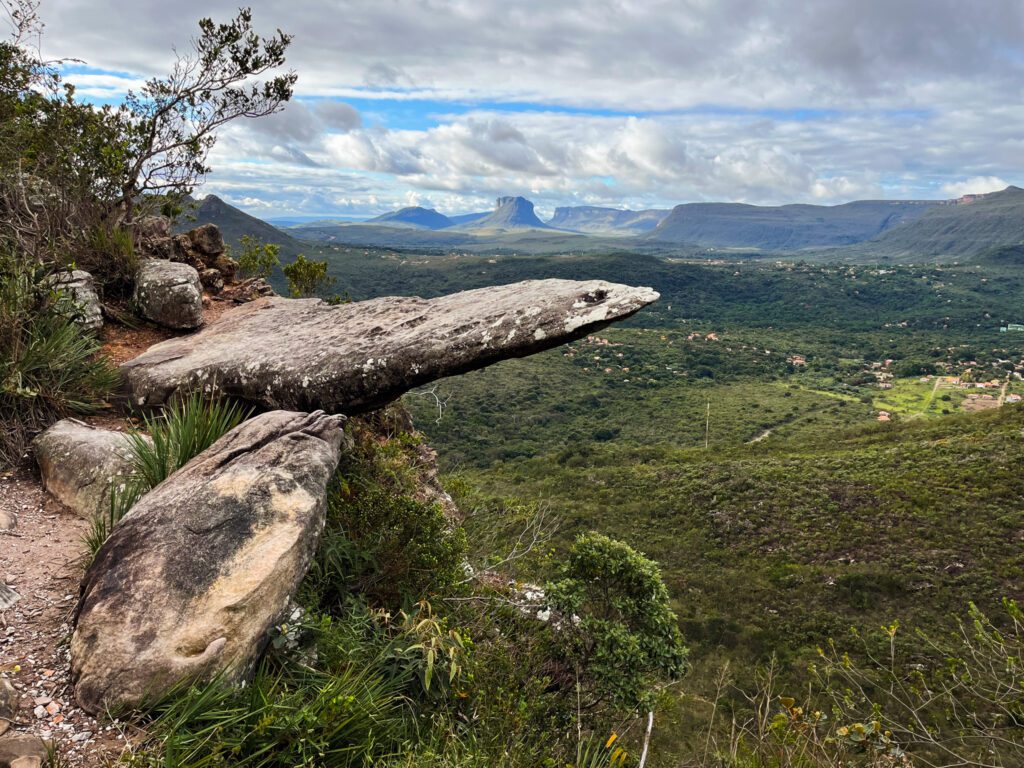

Other Things to Do in Vale do Capão
If you have access to a car, check out the waterfall of Cachoeira do Riachinho, which is slightly outside of town. Also pay a visit to the farmer’s market in the town’s central plaza, where you can buy both produce and prepared food.
For the most part, aside from hiking there aren’t many things to do in Vale do Capão itself, unless we’re counting interesting people-watching (the town is a magnet for free-spirited hippies). If you’re looking for more options, head to Lençóis for more things to do and a slightly livelier atmosphere.
How Long to Stay in Vale do Capão
If you’re planning on visiting Vale do Pati from Vale do Capão, you’ll need at least 3-4 days just for the trek. For Vale do Capão itself and local day hikes, plan on at least 2 days.
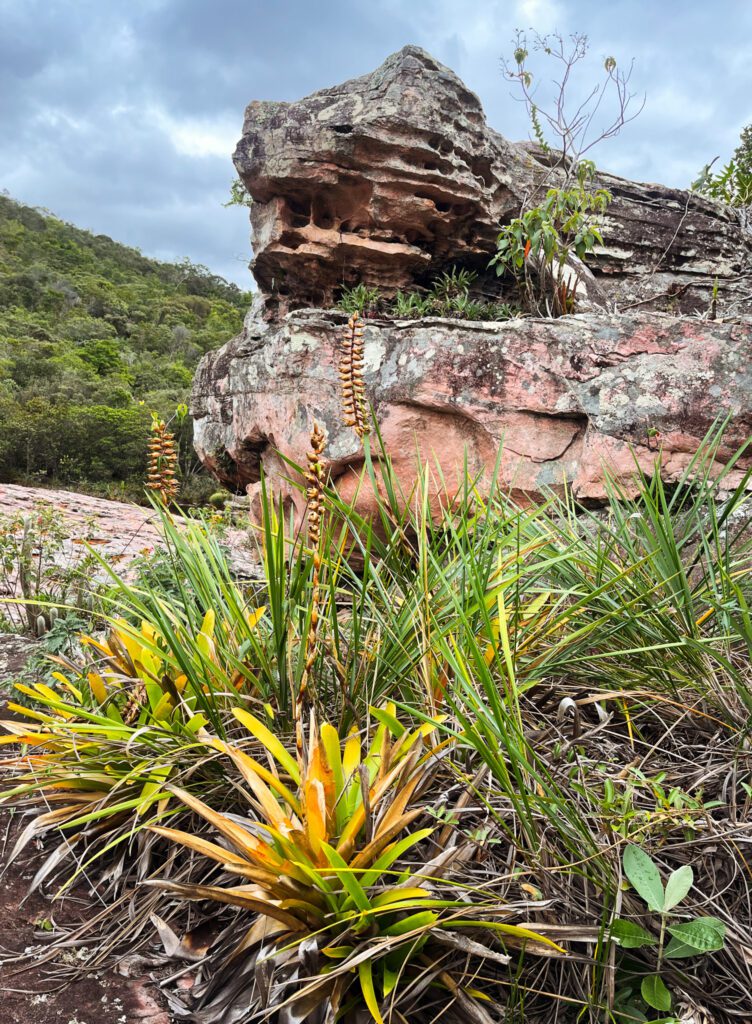

Vale do Capão Weather and When to Go
Vale do Capão can be visited year-round. Weather variations between seasons are less drastic compared to other regions of Brazil. Temperatures are generally warm all year.
May to September is the dry season, which also coincides with slightly cooler temperatures. During my visit in June, I experienced some light rain, with the weather alternating between sun and clouds. Daytime temperatures were warm, with cooler nights.
From October to April, the rainy season brings higher temperatures. This period showcases the waterfalls in their full splendor, although during my June visit all of the local waterfalls were still flowing.
Vale do Capão and Chapada Diamantina in general are a popular holiday destination for Brazilians, so avoid visiting during Brazilian holidays if you don’t like crowds!
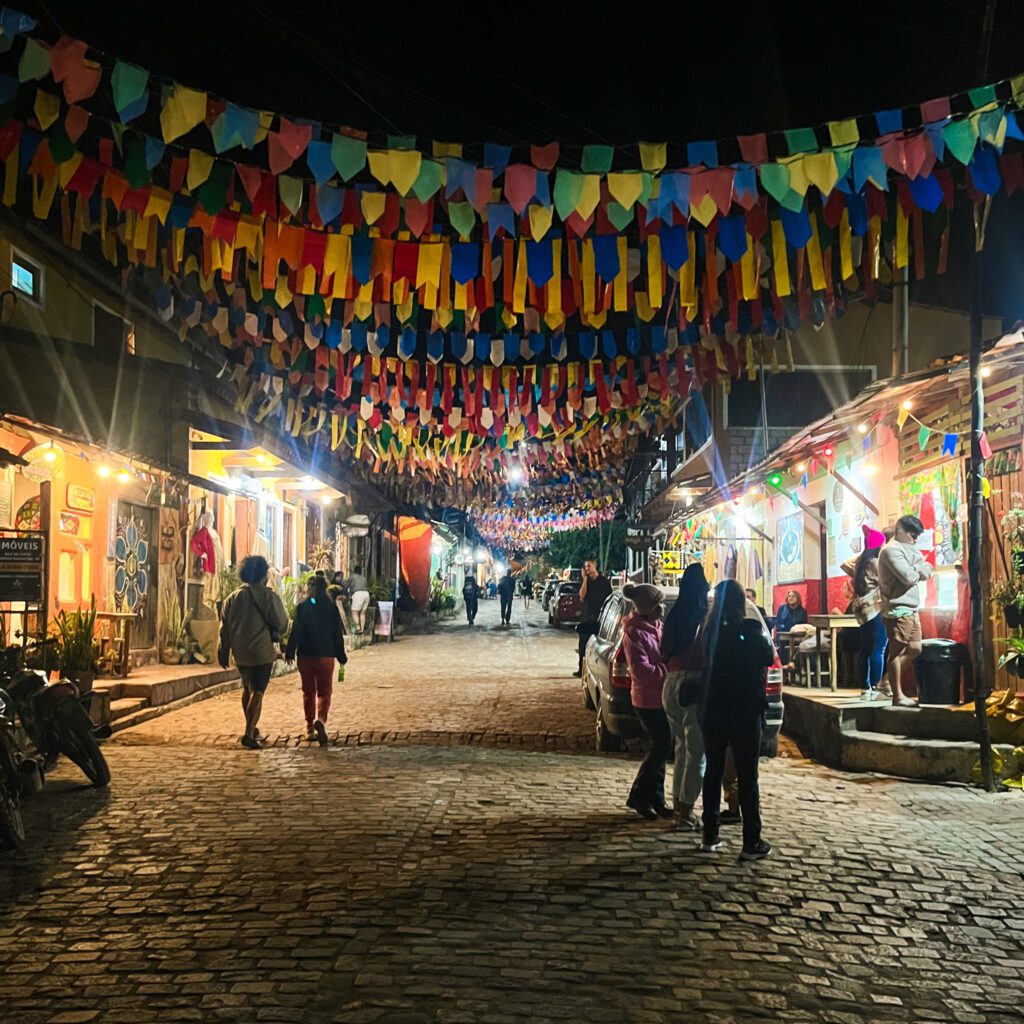

Festivals
If you’re in Brazil in June, make sure to catch São João (Festa Junina). In Vale do Capão, you’ll find traditional celebrations including concerts, dance events, bonfires, and delicious local food like corn-based dishes and sweets.
Where to Stay in Vale do Capão
Refreshingly, Vale do Capão is a quiet hippie town that has not been overly developed for tourism. Accommodations are basic and have an authentic homestay feel. I encountered mostly Brazilian tourists here, so brush up on your Portuguese if you want to make new friends!
For convenience, I recommend booking accommodation near the town center. While there are options farther out, accessing them without a private vehicle can be challenging. Also, if you’re planning to do the Vale do Pati trek, most accommodations should have no problem storing your bags for a few days while you’re away.
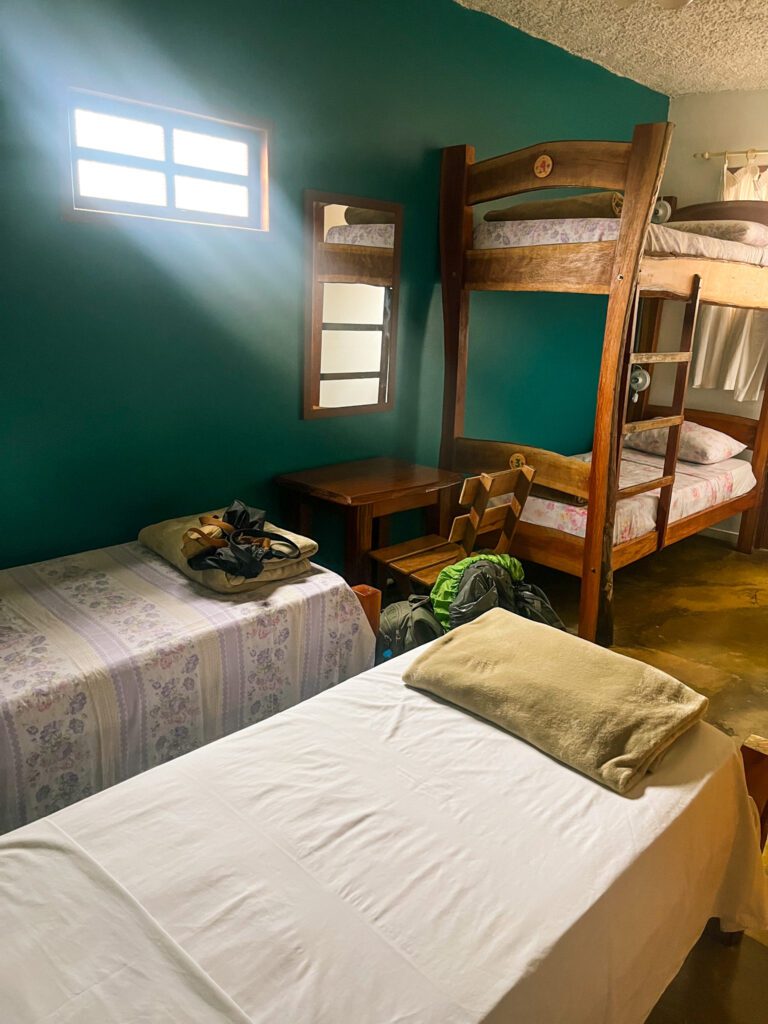

Budget:
Pousada Tatu Feliz. This hostel offers private rooms as well as small dorms. I stayed here and loved that it was located right in the center of town.
For an even lower budget option, pitch your tent at one of the campsites in town.
Mid-Range:
Pousada Vie. For modern suites with mountain views, stay here.
Villaflor Pousada. Choose from spacious apartments and chalets with a garden and swimming pool.
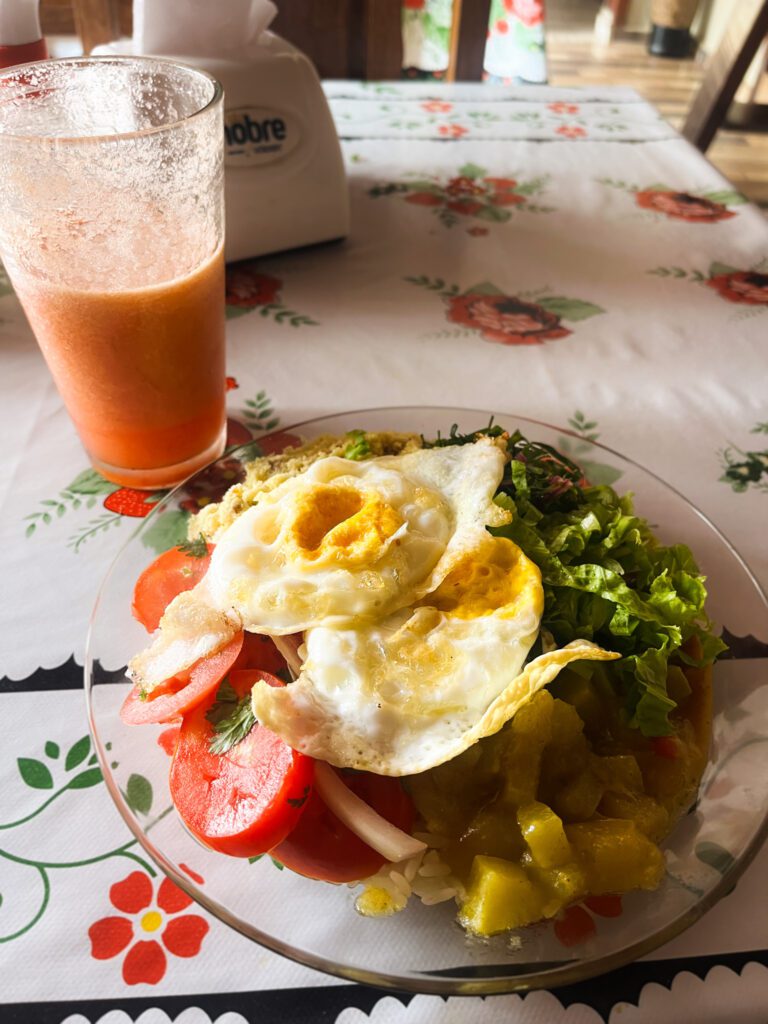

Where to Eat in Vale do Capão
Vale do Capão is a great place to try regional food specialties. Thanks to the large population of hippies, it’s also not too hard to find vegetarian or even vegan food options here.
There’s no shortage of excellent local eateries, but my favorite spot was Comida Caseira Dona Belli. This restaurant serves hearty portions of healthy food, fresh juices, and has vegetarian options.
Some local specialties you should try are:
- Cuscuz: Couscous made with corn flour, often served with an egg or other toppings for breakfast.
- Palmito de Jaca: Locally grown jackfruit, frequently used as a meat substitute in vegetarian dishes or as a filling for snacks like pastels or coxinhas.
- Tapioca: Savory or sweet crepe-style snacks with a variety of fillings.
- Artisanal chocolate: Locally made chocolate makes for great hiking snacks.
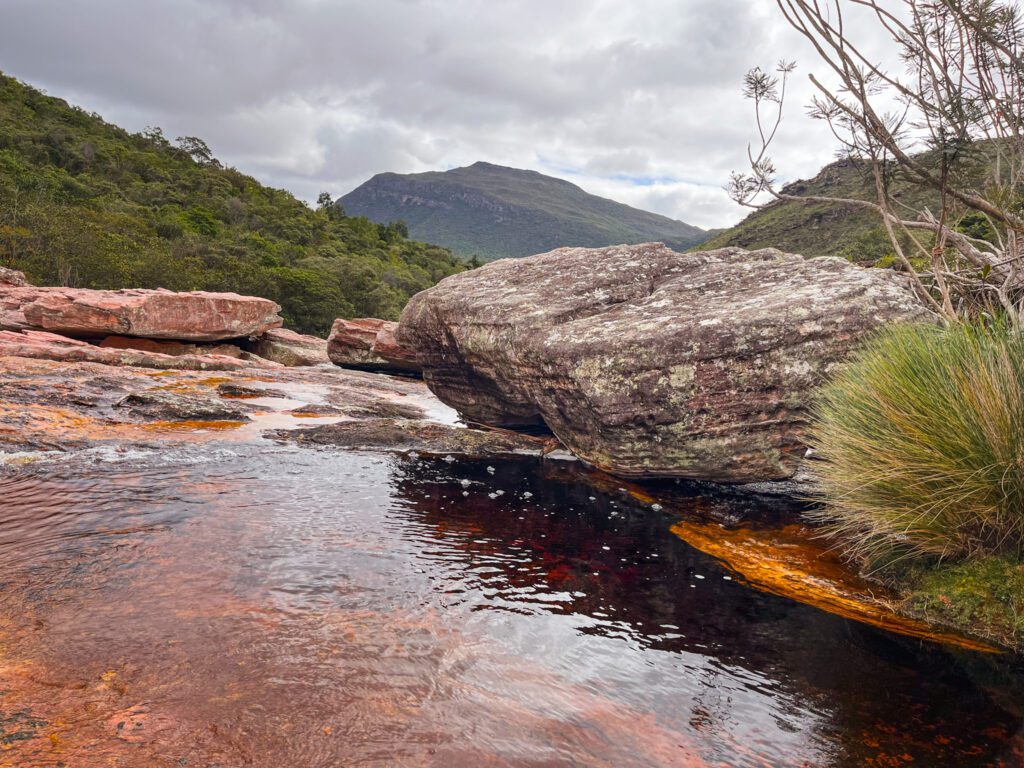

Is Vale do Capão Safe?
Vale do Capão is a safe place to visit and far from any urban centers with crime. However for peace of mind, check out my travel safety tips and make sure you have travel insurance.
Budget and Money
There are no ATMs or banks in Vale do Capão, so bring some cash with you. However, like in much of Brazil, many places in town accept card payment. Unless you plan on joining guided tours, most tourist activities (such as local hikes) are free. In terms of expenses, I found Vale do Capão to be slightly more affordable for food compared to Lençóis, with accommodation costs being about the same. Overall, the northeastern region of Brazil is significantly more budget-friendly than areas popular with foreign tourists, such as the south.
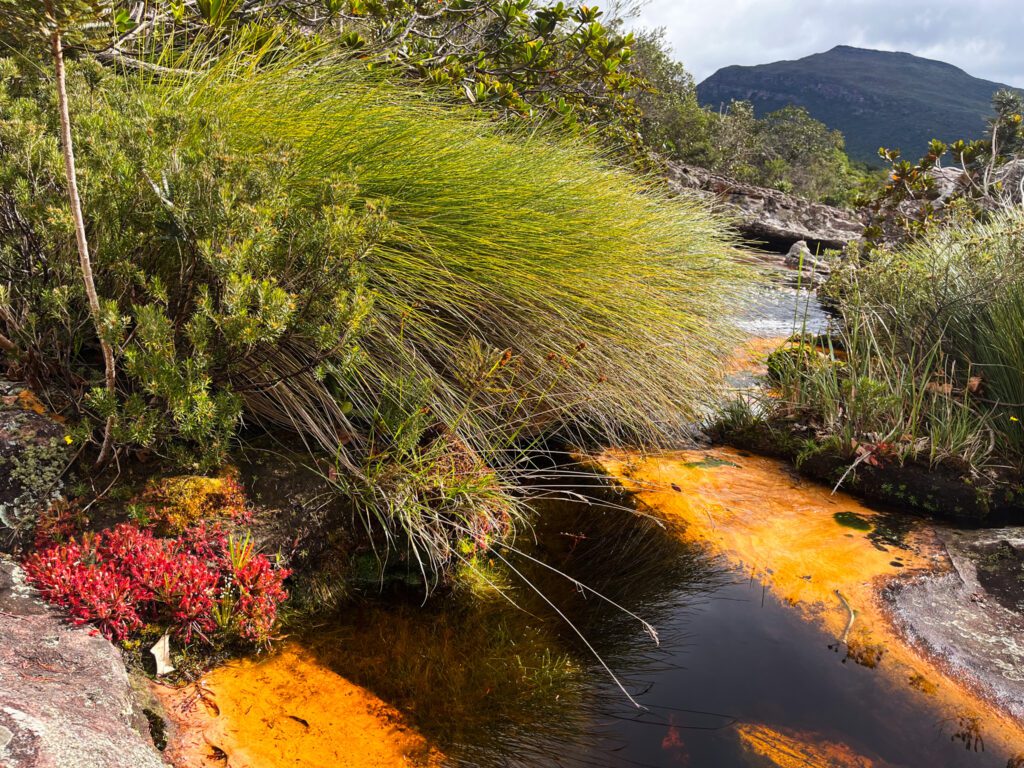

What to Bring to Vale do Capão, Chapada Diamantina
For a full list of what to bring on local hikes, check out my day hiking packing list.
- Downloaded maps of Vale do Capão and nearby hiking areas (use Google Maps or MapsME)
- SIM or eSIM card
- Rain jacket (Women’s, Men’s)
- Hat
- Sunscreen
- Mosquito spray
- Trail Runners. Women’s, Men’s. Sections of the hikes may be wet and muddy; considering the heat, quick-drying trail runners will be most comfortable.
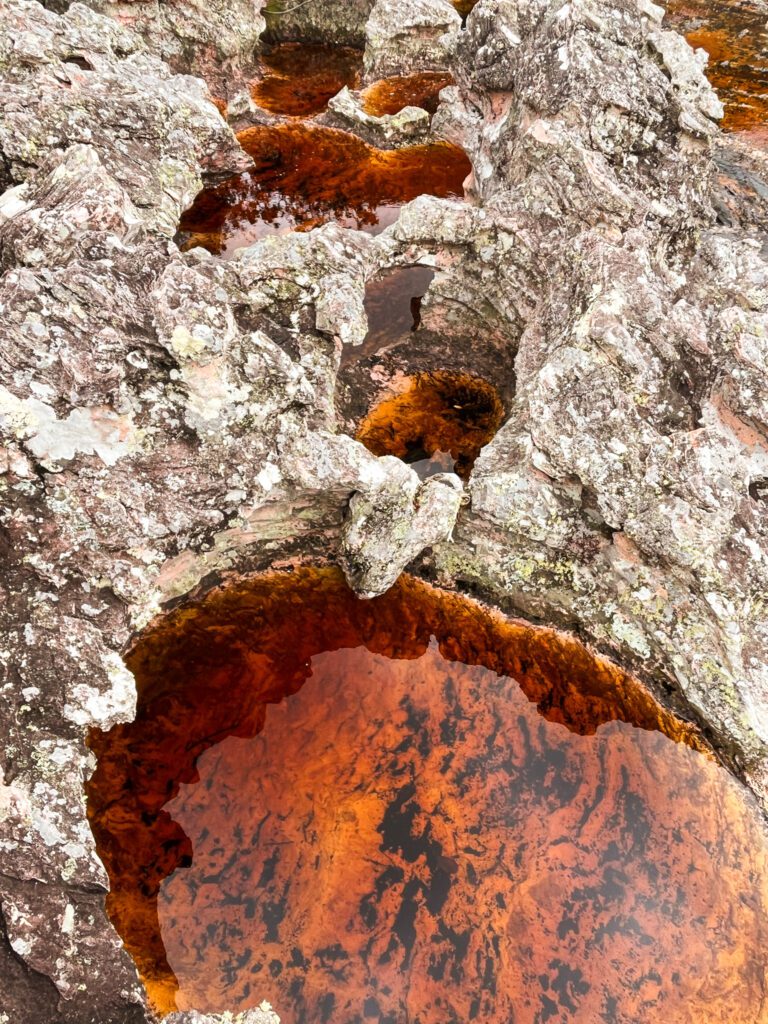

How to Get to Vale do Capão, Brazil
Vale do Capão is located in Chapada Diamantina National Park, and you can easily get there from Salvador, Brazil. The town is sometimes referred to as Caeté-Açu. The closest bus station to Vale do Capão is Palmeiras. There’s a night bus running from Salvador to Palmeiras. It’s a ~7.5 hour trip, and I recommend purchasing your ticket on Busbud in advance.
From the Palmeiras bus station, there are shared vans that will take you to Capão. Tip: get off the bus as fast as you can and head straight for the vans! Sometimes, there’s not enough space for everyone in the shared vans to Capão, and you don’t want to be left behind with an expensive taxi.
Vale do Capão is a small town and you can get around by walking, but you will sometimes see moto-taxis available for short distance rides. You can also try hitchhiking.
Where to Go Next
From Vale do Capão, you can easily get to Lençóis to explore more of Chapada Diamantina. Or, take the bus back to Salvador, which is one of my favorite destinations worldwide!
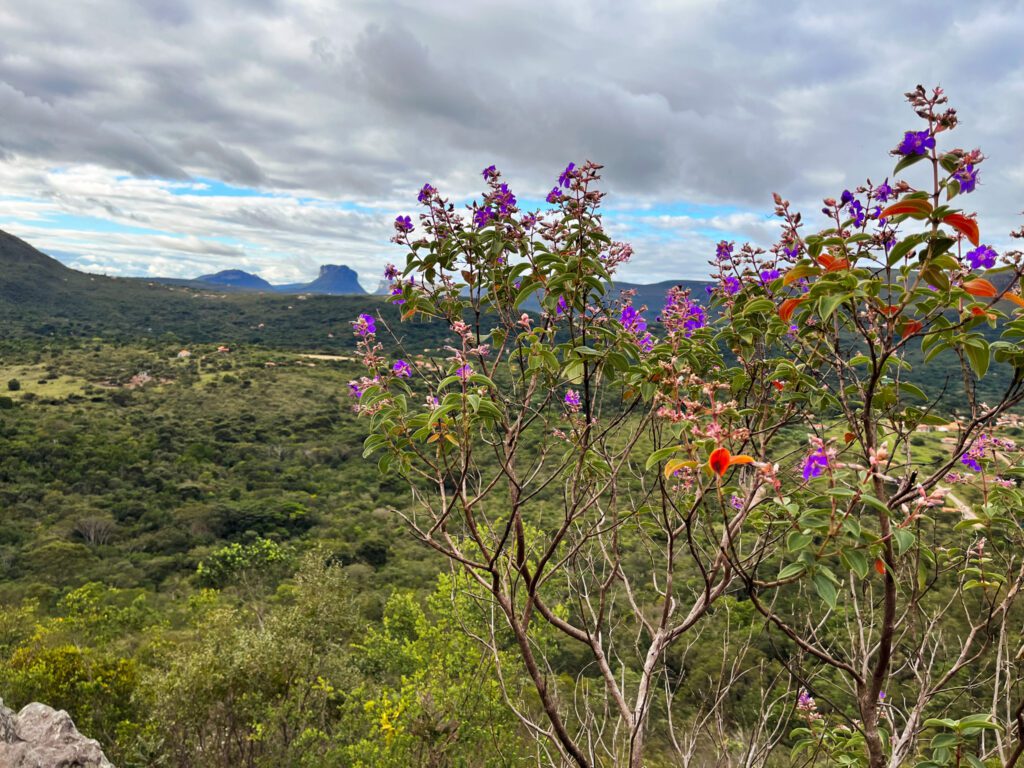

Thanks for reading, and I hope this guide to Vale do Capão, Brazil was helpful! Thoughts? Questions? Let me know in the comments. Happy travels!
For more places to explore, check out my Brazil destination guides and Brazil hikes page.
Confirm all logistical and safety information before your trip. Also If you buy through links on this site, I may earn an affiliate commission. Thanks for supporting me in creating free content for you to enjoy!
Save this post for later and share on Pinterest!
HIKING TRIP RESOURCES
Head to my Travel Resources Page for more recommendations.
Hiking Checklist and Backpacking Checklist. Make sure you have everything you need before heading out.
Viator and Get Your Guide. If you don’t want to hike or camp alone, there are various organized tours you can join, ranging from day trips to multi-day excursions.
Booking.com. This is my go-to platform for booking accommodation since it consistently gives me competitive prices and additional discounts based on usage.
LifeStraw. This easy-to-use water filter guarantees that you always have access to clean drinking water.
Travel Credit Card. Earn substantial points for travel-related expenses and a very generous bonus when opening an account.
Comments




Hi, I’m Kristina! I’m a solo female traveler sharing my personal experiences around the world. Authentic travel is important to me; in my destination guides I emphasize not just the most spectacular sights but also the local stories and history.
Other things I’m passionate about are discovering hidden gems, budget-friendly travel, and hiking and backpacking. My goal is to show you how to seek adventurous experiences for yourself!

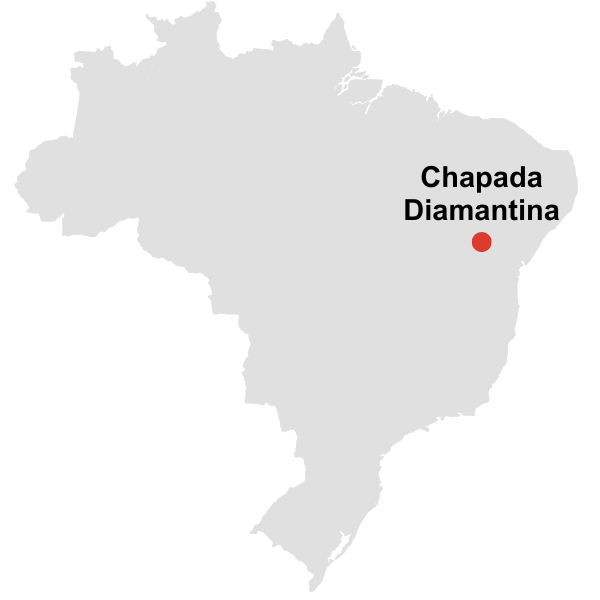
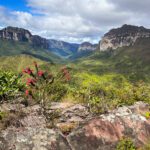
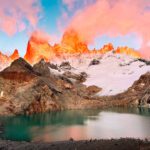
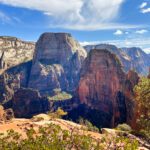
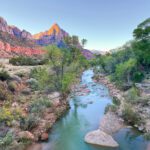
Leave a Comment